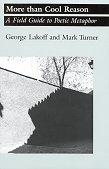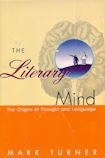For more than a decade, Clear and Simple as the Truth has guided readers
to consider style not as an elegant accessory of effective prose but as its very heart.
Francis-Noël Thomas and Mark Turner present writing as an intellectual activity,
not a passive application of verbal skills.
In classic style, the motive is truth, the purpose is presentation,
the reader and writer are intellectual equals, and the occasion is informal.
This general style of presentation is at home everywhere,
from business memos to personal letters and from magazine articles to student essays.
The book is divided into four parts.
The first, “Principles of Classic Style,” defines the style and contrasts it with a number of others.
“The Museum” is a guided tour through examples of writing, both exquisite and execrable.
“The Studio,” new to this edition, presents a series of structured exercises.
Finally, “Further Readings in Classic Prose” offers a list of additional examples
drawn from a range of times, places, and subjects.
A companion website, classicprose.com, offers supplementary examples,
exhibits, and commentary, and features a selection of pieces written by students
in courses that used Clear and Simple as the Truth as a textbook.
I recently read Steven Pinker’s The Sense of Style.
He discusses classic style, a particular style for writing clear, compelling prose,
and recommends Clear and Simple as the Truth for those interested in finding out more.
I was definitely interested, so bought it, read it, and am now reviewing it.
The authors describe this particular style, in use since ancient times, thus:
[p37.]
The idiom of classic style is the voice of conversation.
The writer adopts the pose of a speaker of near-perfect efficiency
whose sentences are the product of the voice rather than some instrument of writing.
…
Classic style models itself on speech and can be read aloud properly the first time.
In speech, an expression is gone the moment it is spoken,
and has only that one instant to enter the mind and attain its place in memory.
Since classic writing pretends to be speech,
it never requires the reader to look forward or backward;
it never admits that the reader is in a situation to do so.
Each phrase is presented as if it has only one chance—now—to do its job.
Of course, a reader may in fact go over a passage of classic prose many times.
But the classic writer never acknowledges that possibility either explicitly or by implication.
Their whole book is written in classic style,
becoming one large example of what they are describing.
Try reading the quoted paragraph out loud.
It is easy to do so; significantly easier than much writing one comes across.
Being easy to read, whether aloud or not, does not imply being easy to write.
Thomas and Turner contrast two sentences,
the first written in classic style, the second most definitely not.
[p15.]
La Rochefoucauld’s sentence was of course difficult to write, but it looks easy.
The writer hides all the effort.
[Samuel] Johnson’s sentence was clearly difficult to write,
and its writer wants to display it as if it were a trophy won through his personal effort.
Here we learn something not acknowledged in other books on writing style:
style is not singular.
There are different styles, each suited to different uses.
Other books cover only the one style, implying it is the only one.
This books acknowledges the existence of other styles; classic style is not style, it is a style.
[p67.]
What Strunk and White recommend is meant as good advice for the one style they have in mind;
what Williams and Colomb recommend is good advice for the one style they have in mind.
Style here means the style of deep structure of the prose,
not the grammar police style concerned with relatively trivial surface marks.
The authors have it in for Strunk and White in particular,
repeating their withering paired sentence structure in a further contrast:
[p78.]
The best-known teachers of practical style are Strunk and White,
in their ubiquitous Elements of Style.
The best teachers of practical style are Joseph Williams and Gregory Colomb,
in Williams’s Style: Toward Clarity and Grace
and a series of academic articles and technical reports.
This kind of sentence pairing is an exemplar of classic style,
of assuming the reader is competent,
and so can draw obvious conclusions without needing them hammered home.
As well as describing what classic style is,
the authors characterise it by describing what it is not,
by contrasting it with other styles.
Classic style is not plain style,
where the writer is addressing an audience, reaffirming simple unchallenged truths;
in classic style the writer is speaking to a single person, and the truth, while clear, is sophisticated.
Classic style is not the self-conscious reflexive style;
in classic style the writing is a transparent window through which the reader regards the presented truth.
Classic style is not practical style (although it is the closest)
where the writer has the job of educating an audience,
with the purpose of satisfying a need or solving a problem
(a utilitarian style suitable for reports and instruction manuals);
in classic style the writer is speaking to an equal, is presenting information for its own sake rather
than to address the reader’s need, and their work cannot be skim-read.
Classic style is not contemplative style, where meanings are presented as the interpretation of the writer,
and the process of writing is a hesitant process of discovery;
in classic style, the writer presents the unhedged finished product of prior thought as uninterpreted truth,
or at least passes off their interpretation as such.
Classic style is not romantic style, which is a mirror on the writer’s thoughts, sensations and emotions;
classic style is a window on the world.
Classic style is not prophetic style, which depends on abilities or insights available only to the chosen few;
classic style expresses truths that can be verified by all.
Classic style is not oratorical style,
where a leader or candidate is unsubtly persuading an audience to an action or agreement;
classic style is disinterested and nuanced.
Classic style is not perfection, however.
Often the writer does have an agenda,
and the truth is rarely clear and simple.
Towards the end of the Essay section,
the authors describe some “trade secrets” on how the classic stylist can cope with such situations,
whilst maintaining the advantages of the style.
They also dissect a Museum-full of samples written in the classic and non-classic style.
But explanations and examples are not enough to gain writing proficiency.
[p189.]
Once we had written the Essay and the Museum, we thought we had finished our book.
Anyone who wanted to acquire the style, we assumed, had everything necessary at hand.
All we had left out was the work involved in acquiring the style.
Classic style pretends there is no work in writing,
and we had happily skipped right over all the stages we had gone through ourselves
in acquiring this most versatile and useful style.
This second edition includes a Studio section: exercises for learning writing in the classic style.
Many of these exercises involve no writing, only speaking;
the classic style is conversational, so the student is encouraged to learn the style through conversation,
and only later write it down.
Writing in classic style does not make everyone sound the same.
There is room for personal style within classic style.
The Museum examples each have their distinctive voice.
The Pinker that sent me here is in classic style,
with a lightness of touch.
Clear and Simple as the Truth is also in classic style,
a smooth, relaxed read, and yet with an underlying thump-thump-thump to the prose.
Apart from a few places, such as the Strunk and White put-downs,
there is a monotonous tone to the work, and no sparkle.
However, the prose is indeed transparent,
and so the thumping is ignorable, and the lack of sparkle not an impediment.
Nevertheless, Pinker is the better stylist.
My takeaway message:
if you have to write a manual or report for a specific purpose,
use practical style, and follow the excellent guidelines
in Williams’ Style;
if you want to write a piece for general interest,
use classic style, and follow the excellent advice here.


